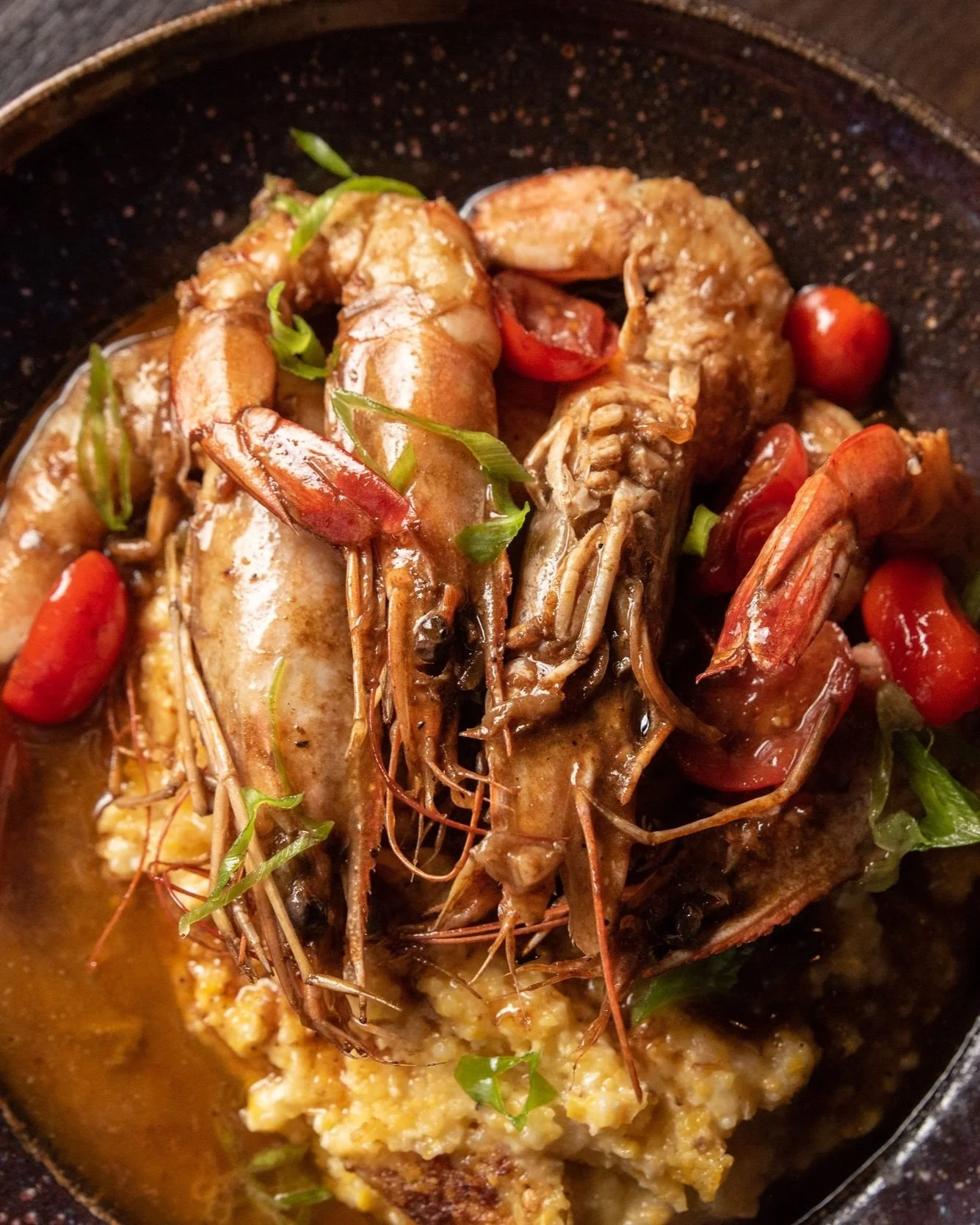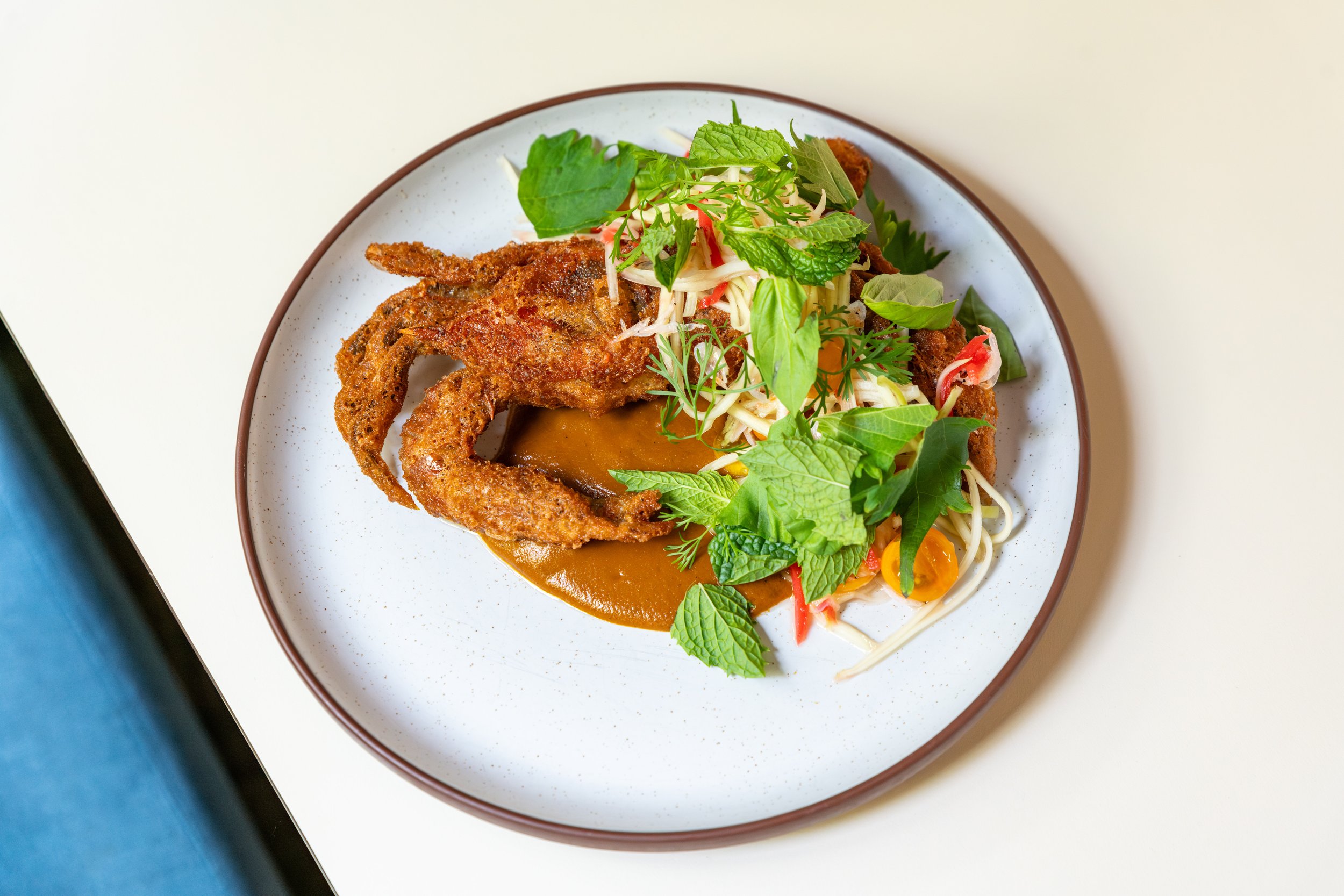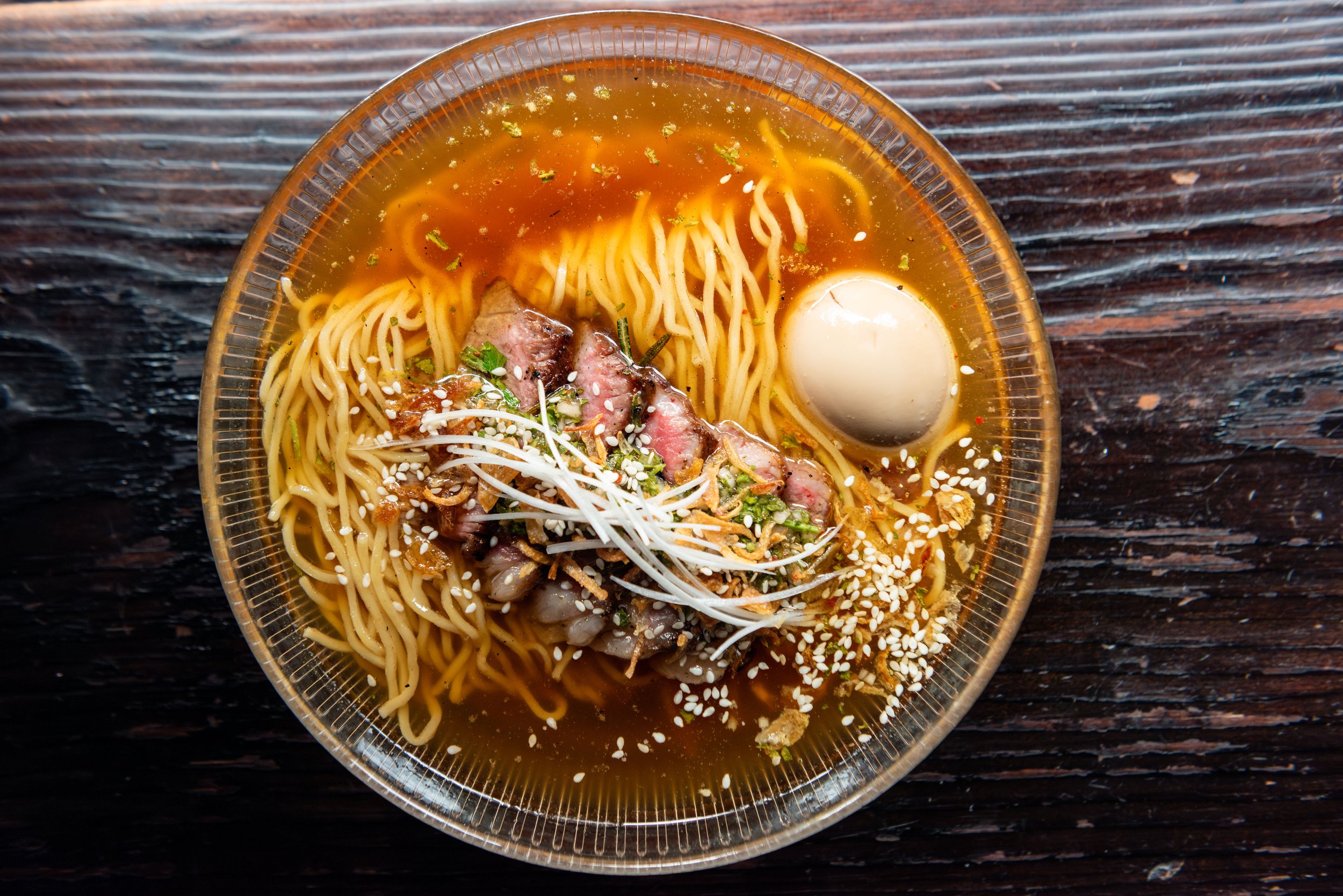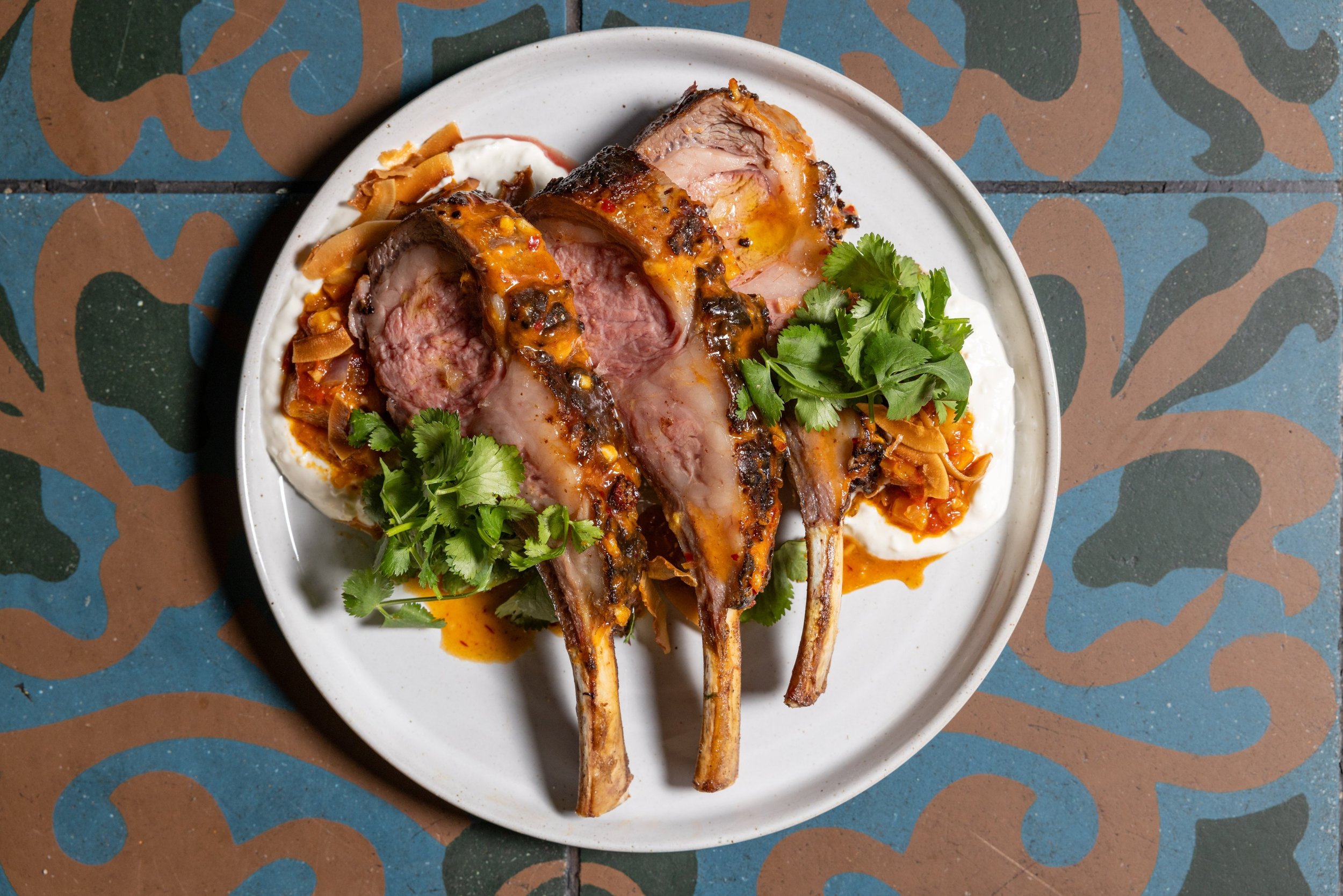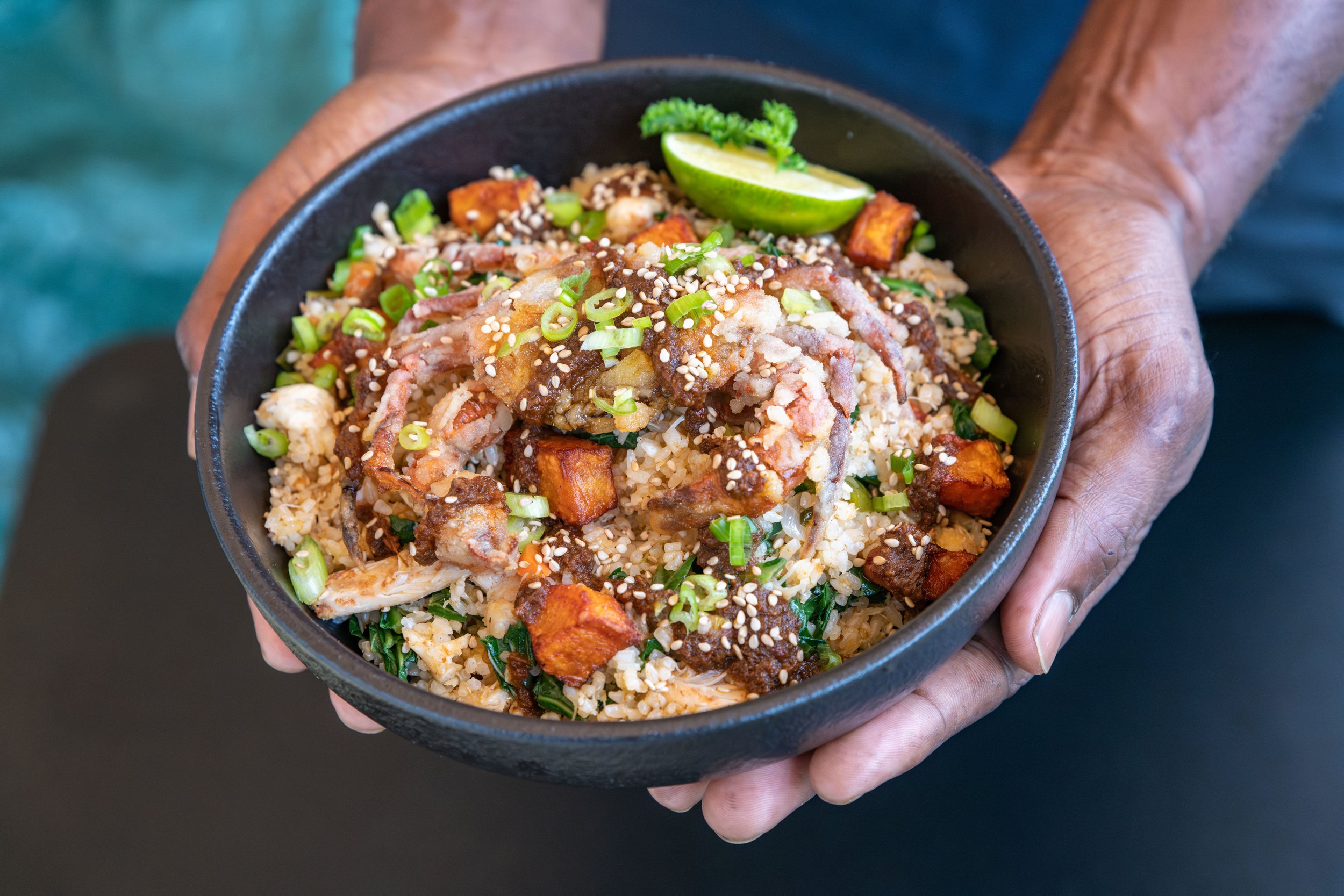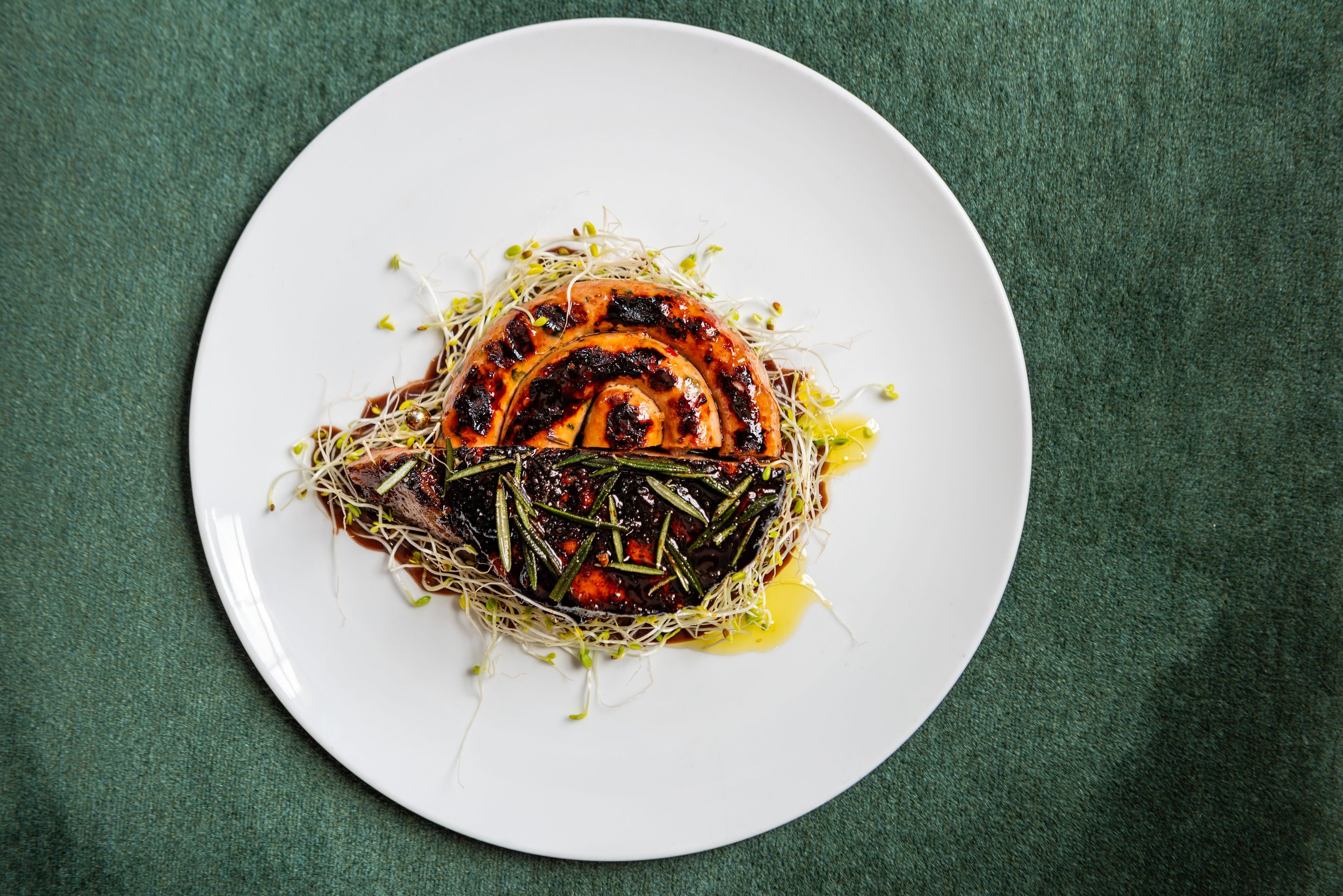The World’s Hometown
The blend of cultures in Houston has led to cuisine crossovers that now seem intuitive.
The most diverse city in the country, ever-growing metro Houston, is expected to be home to more than seven million in 2020. Those Houstonians, altogether, speak more than 140 languages. The most widely spoken, aside from American, are Spanish and Vietnamese. This blend of cultures has led to cuisine crossovers that now seem intuitive. Take Viet-Cajun, or Viejun. During the three weeks that StarChefs spent in Houston, so many chefs made an indelible impression on us. Here are five stories of food and restaurants that represent the diverse Houston that welcomed us.
Izakaya
How can you fit a lifetime’s worth of culture and history into a small steamed bun? Just ask Chef Cyrus Caclini, executive chef of Izakaya. Growing up in the Philippines, Caclini would take charge of the kitchen whenever his parents were too busy, frying up whole fish and steaming siopao (pork buns). At the age of sixteen, Caclini and his family immigrated to the states, where Caclini enrolled in Houston’s Culinary Institute Lenotre. Upon graduating, Caclini trained at nearly every type of restaurant in Houston: New American fine dining at Noe, French and Mexican banquet-style dining at the River Oaks Country Club, modern Japanese cuisine at Kata Robata, and upscale Indian at Kiran’s. Caclini became a self-made melting pot, and at Izakaya, a Japanese-American gastropub, he’s ladelling out a small portion of that pot and wrapping it in yeasted dough. These siopao-inspired buns are filled with a rotating selection of game meats—our variation had Texas bison. “Focusing on the spices I used with Chef Kiran, I made my own Chinese five spice with star anise, cloves, black pepper, cardamom, and Szechuan,” says Caclini. This alternative to traditional Chinese five spice, typically replacing the black pepper and cardamom with cinnamon and fennel seeds, creates a deeply savory flavor that allows the bison to take on a new personality.
Blood Bros. BBQ
There may not be a sandwich more quintessentially Houston than a smoked turkey banh mi. “We don’t have good delis here,” says Terry Wong, one of the three founders of Blood Bros. BBQ. “Houston’s cold sandwich is a banh mi.” Terry, along with his brother Robin and “blood brother” Quy Hoang, did not intend to create a barbeque joint that breaks convention. Blood Bros. BBQ was a happy accident. Hoang began experimenting with barbecue to cater the customer appreciation parties at Terry and Robin’s Glitter Karaoke Bar. These grilled “steak dinners” were a hit and the trio decided to invest in a trailer-mounted smoker. “We’re trying to do a traditional way of cooking Texas-style barbecue but with Houston flavors,” says Hoang. “Houston is so diverse and we’re trying to embody that.” This led to Texas-style smoking and Asian-influenced flavors. On any given day you can order trays of brisket, pulled pork, and potato salad, as well as brisket fried rice, peach-habanero pork belly burnt ends, and, on Thai Day Friday, peanut butter sticky ribs and green curry boudin. And let’s not forget about the banh mi. In an attempt to utilize the unjustly undersold smoked turkey, the Blood Bros’ decided to cold cut it and stick it in a French Riviera Bakery baguette with chicken pâté, aïoli, jalapeños, cucumbers, cilantro, and pickled carrots and daikon. The Bros now make extra turkey to make up for the popularity of the sandwich.
Roost
There are no limits to creativity when you cook like Chef Kevin Naderi. “I don’t pigeonhole myself in a specific name or concept,” he says. “I just cook the shit that I like to eat.” Naderi’s restaurant, Roost, is the quintessential neighborhood spot. It’s warm, inviting, and it’s menu blends Southern, Asian, and Middleastern flavors. Guests may find anything from North African berbere-spiced chicken wings to delicata squash risotto to roasted pumpkin flan. With Houston as your backdrop, marrying global cuisines with the American South is natural. Naderi is a child of two Iranian immigrants who came to the States for college and planned to return, but once the Iran-Iraq war broke out, they decided to make a new home of Houston. “I was a troublemaker,” says Naderi of his Houston childhood. “Actually, I went to military school, and when I came back, my high school put me in home economics.” Cooking brought Naderi discipline, imagination, and the realization of a natural talent—one that he still continues to pursue. Although he enjoys learning and mastering every and all cuisines, Persian flavors have followed him throughout his career, from a cabbage roll that beat Bobby Flay to an enormous pomegranate-glazed lamb shank. At Roost, the lamb is a deconstructed rendition of Khoresh Bademjan, a Persian eggplant and tomato stew that often includes lamb. “I like the lighter rendition of it,” says Naderi. He slow roasts his lamb shank at a low temperature until the meat begins to fall of the bone. Then he lays it over shallot basmati rice, grilled chinese eggplant, and a sweet tomato-cinnamon gravy. A flourish of herbs and crispy shallots finishes the dish. It’s an ode to Naderi’s heritage, thoughtfully executed with French-Southern technique: a true Houston love ballad.
Poitín Bar & Kitchen
When Lousisianan Dominick Lee moved from NoLa to Houston, he traded one cultural milieu for another. As executive chef of Poitín, Lee is serving the multiculturalism that forged him on every plate. “We have okra, corn, and bay growing on site here, irrigated with rain water collected in a cistern. You can’t have Southern cooking without bay leaf,” say Lee. “Being from New Orleans, all those dishes like jambalaya etc., they are all cooked with bay leaf. They do that in Indian cooking, too.” Lee worked for Chef Kiran Verma at Kiran’s, and it shows. He marries Southern, Japanese, and Inidan influences in the sexiest okra dish we’ve ever encountered: okra tempura, bonito flake, and smoked tomato sauce. The okra is pickled, adding tang, and the tempura batter is made with cornmeal. You can spin each crisp, elongated pod around like a mozzarella stick in the smoky, bay-infused sauce. The bonito flakes adhere as you go. It’s an unusual and unusually delicious dish, with those flakes waving up at you like a mirage. It’s a new, personal vision of Southern cooking from a Creole chef cooking in Houston. If that piques your interest, you’ll also want to take Lee’s fried game hen with tikka masala sauce, cornbread, and pickles for a test drive.




